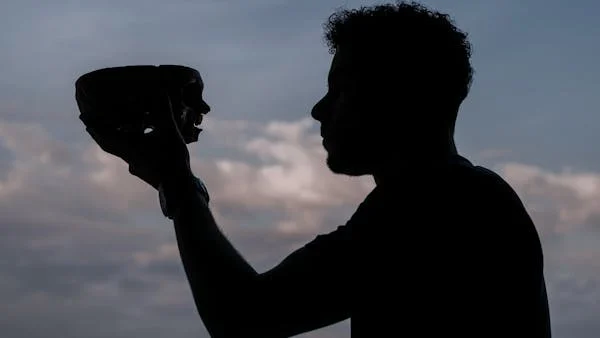Table of Contents

Introduction
Imagery Meditation – One of the things which in today’s life is desperately sought after are the ways of relaxing and searching for serenity. Power tools in achieving these ends has been imagery meditation-a method guiding your mind through visualization with the help of bringing your own self to a state of peace.
Mental imagery has much potential in bringing the subject into relaxation and clarity. Whether it is a peaceful beach, silent forest, or the gentle flow of a river, imagery for relaxation can change the way we relax and find our center. This blog takes a look at how imagery meditation might be your doorway to a more balanced and peaceful life.
What Is Imagery Meditation?
This meditation exercise encourages an imagery form of mindfulness wherein participants would use vivid mental imagery to foster relaxation, curb stresses, and enhance overall wellbeing.
This type of meditation will be unlike traditional forms as this requires the individual’s engagement in using soothing calming images and scenarios for effective breathing or observation of mind chatter.
For example, you can shut your eyes and picture sitting near a soft waterfall, experiencing the cool mist on your skin as well as the rhythm of water flowing.
In doing so, you will make an intentional focus on the sensory details that brings such power to the relation of the mind and the body; thus, imagery for relaxation is a fine stress reliever and emotional balancer.
Science behind Imagery Meditation
That, in turn, makes this imagery meditation effective because the very source on which these mental exercises depend-the brain and its allied systems-will respond to vivid scenes or experiences as it would if we were right in there, thus eliciting “relaxation response,” which dopes down stress hormones like cortisol and increases feel-good chemicals serotonin, among others.
Research has established that imagery for relaxation helps to decrease heart rate, lower blood pressure, and slow one’s mind. Visualization stimulates the prefrontal cortex, a focus-enhancing, creativity-spurring, and emotional regulation element; therefore, it is a holistic method for relaxation.
Benefits of Imagery Meditation
1. Physical Benefits
Imagery meditation relaxes tense muscles, helps in quality sleep, and reduces physical symptoms of stress. Imagery for healing and calm may also aid in recovery from chronic conditions by reducing inflammation and establishing a restful state.
2. Emotional Benefits
Relaxation imagery helps the mind overcome anxiety and depression by providing a sense of security and calmness. It builds up emotional strength, making it easier to face life’s obstacles.
3. Mental Benefits
This practice increases mental sharpness and attention, therefore making better choices and being creative. Visualization is also used in ridding thoughts of negativity and increasing positivity.
How to Practice Imagery Meditation
1. Select a calm, relaxing location
Start with an environment that is quiet and comfortable enough to initiate imagery meditation. It can be your bedroom, garden, or even a dedicated meditation corner. The point is to remove all distractions so you can think solely of imagery for relaxation.
Step 2: Make Your Imagery
Think of a place or scenario that evokes peace and happiness for you. Common examples are a sunlit meadow, the gentle waves of an ocean, or a cozy cabin in the woods. Personalize your imagery to resonate deeply with your emotions.
Step 3: Focus on Sensory Details
Visualize. Use all your senses; imagine the colors, sounds, textures, and even the smells of the setting you wish to visualize.
For example, if you are visualizing a beach, imagine golden sand, hear the sound of the waves crashing against the shore, and feel the warmth of the sun. The more vividly you use your senses, the more powerful the imagery of relaxation.
Step 4: Breathe and Relax
Associate this visual with slow, deep breathing. As you breathe in slowly, picture you’re pulling peace into you and out with the tension. That will couple breath work and image together for a very intense relaxing effect.
Guided Imagery Meditation vs. Self-Practice
If you’re just starting guided imagery, consider trying a guided imagery meditation session.
Such guided imagery meditations can often be accessed on an app or video recording; the session will take you through step-by-step and have a voice-over for guidance on each point.
It can be done in a more independent way by self-practice, where one can be more flexible and creative. You can mold your imagery according to your taste and explore different scenarios for relaxation.
Both methods work well in harnessing the power of imagery for relaxation, and the choice between them depends on your needs.


Imagery Meditation in Your Daily Life
A long-term benefit of imagery meditation will be achieved when this is done through a consistent practice. First, use it for a short period, 5-10 minutes, and progressively increase the time from day to day as your body gets accustomed to using the practice.
During the morning session, you will feel refreshed, with a good feeling in terms of starting the day right. The imagery practice you have during your lunch break will make you feel energized and reduce some stress levels.
Evening Wind-Down: Incorporate imagery for relaxation into your nighttime routine to improve sleep quality.
Combine imagery meditation with other relaxation techniques like yoga or journaling to enhance its effects.
Overcoming Common Challenges
Challenge 1: Difficulty Visualizing
Many people find it hard to create vivid mental pictures initially. Practice by focusing on real-life memories of places you’ve visited or loved. For example, recall the sounds and smells of a favorite vacation spot.
Challenge 2: Wandering Mind
A wandering mind is normal, and it happens more often at the beginning. When distracting thoughts come up, bring yourself back to your desired imagery or anchor yourself with deep breathing.
Challenge 3: Time
The biggest misconception when it comes to meditation is that it takes a lot of time. Even a few minutes of imagery for relaxation has a huge impact. Make consistency your goal instead of duration.
Real-Life Application of Imagery Meditation
The versatility of imagery meditation makes it suitable for various aspects of life:
Work Stress: Visualize a soothing scene to reset for a stressful day at work.
Exams or Presentations: Imagery can be used to visualize success, reduce anxiety, and increase confidence
Health Recovery: Patients undergoing medical treatments use imagery meditation to visualize recovery and enhance healing.


Strategies to Improve Your Imagery Meditation Practice
Calming Sounds: Use ambient music or nature sounds to enhance relaxation with your meditation
Try Scenarios: Switch between different visualizations to make your practice new and exciting.
Track your progress by journaling the experiences as to which imagery works best for the needs of relaxation.
Imagery Meditation: A Route to Inner Serenity
This transformational power of imagery meditation lies in creating a sanctuary within your mind. It becomes a tool, not only for relaxation but also inner growth and resilience, after practice.
Be it everyday stresses or finding deeper connections within oneself, imagery for relaxation presents an easy yet profound way towards balance and peace.
Advanced Visualization Techniques
Having developed a solid foundation in imagery meditation, one may learn and practice more advanced techniques to deepen your practice. Here are a few strategies to take your meditative sessions to the next level:
1. Multi-Sensory Engagement
Engage all your senses in the visualization process to heighten the impact of your imagery. Instead of just imagining a serene beach, add details such as the scent of salty sea air, warmth of the sun on your skin, sound of waves crashing, and even the texture of sand beneath your feet.
This heightened sensory engagement strengthens the connection between your mind and body, amplifying the relaxation effect.
2. Multilayered Imagery for Deep Relaxation
Try layering a couple of relaxation scenes in a single session. Start picturing yourself in a quiet garden. Then switch to a gentle rain shower. Finally, end up in a log cabin with its fireplace lit. This keeps the mind busy but encourages more relaxed states.
3. Imaginative Visualization for Emotional Recovery
Imagery meditation also works for emotional healing. Just consider letting go of stress or pain into the wind or into a covering of light, like a protective blanket. Such symbolic imaginations help develop resistance and inner strength.


conclusion
Imagery meditation isn’t just a tool for relaxation—it’s a lifelong companion that grows with you. As your needs evolve, so too can your visualizations.
Whether you’re seeking solace in times of stress, clarity in decision-making, or simply a moment of peace in your day, imagery for relaxation remains a versatile and accessible practice.
Start small, experiment with different scenarios, and most importantly, enjoy the journey. The road to deep relaxation and inner peace lies within your mind and waits for you to find it.
Imagery meditation may unlock the door to deep relaxation and inner peace. With vivid visualization and sensory details, you can build a mental escape from stress and chaos.
Use imagery for relaxation as a daily practice, and you will be more grounded, focused, and at peace. Begin your journey today—your mind and body will thank you.
